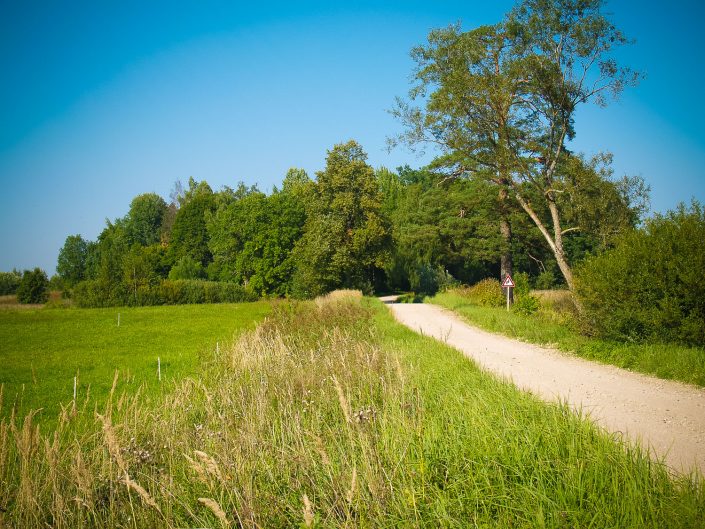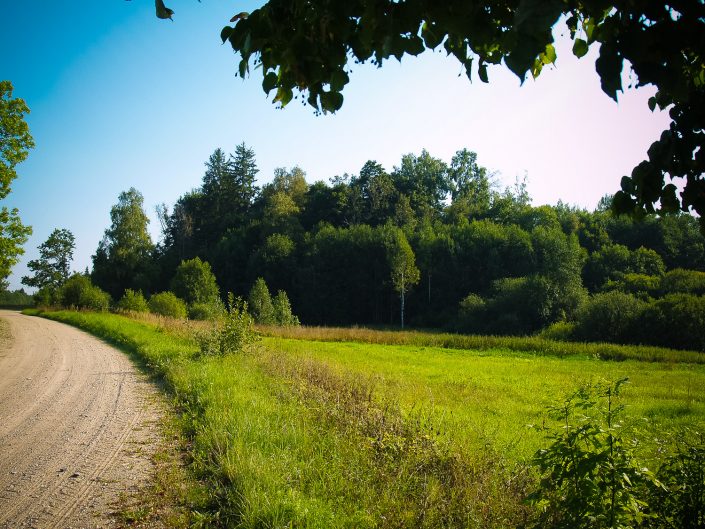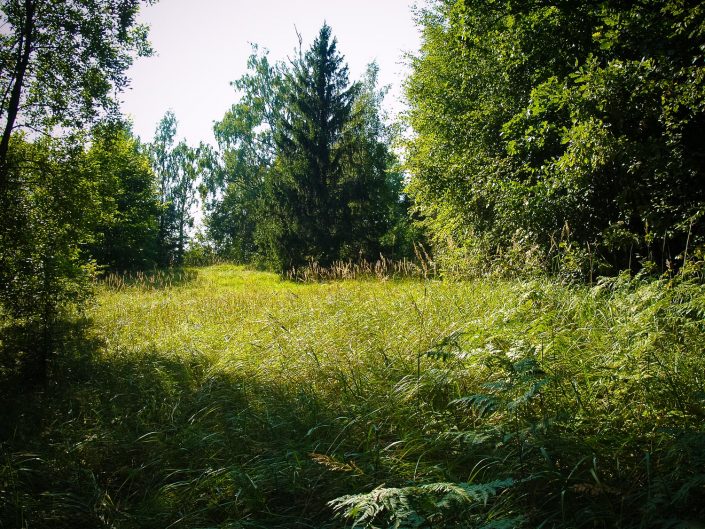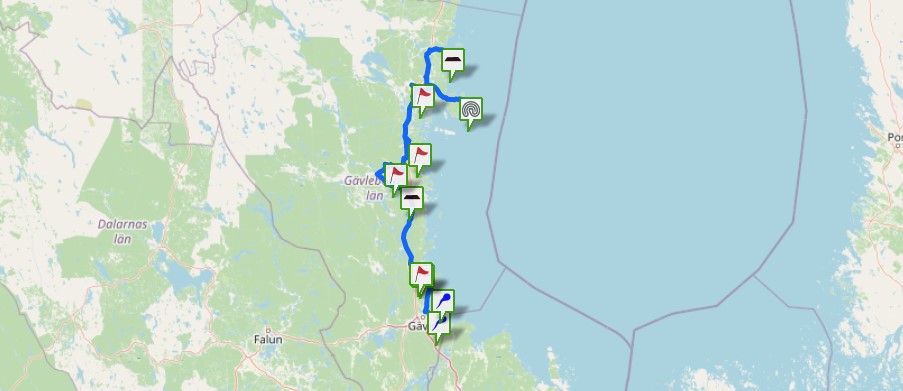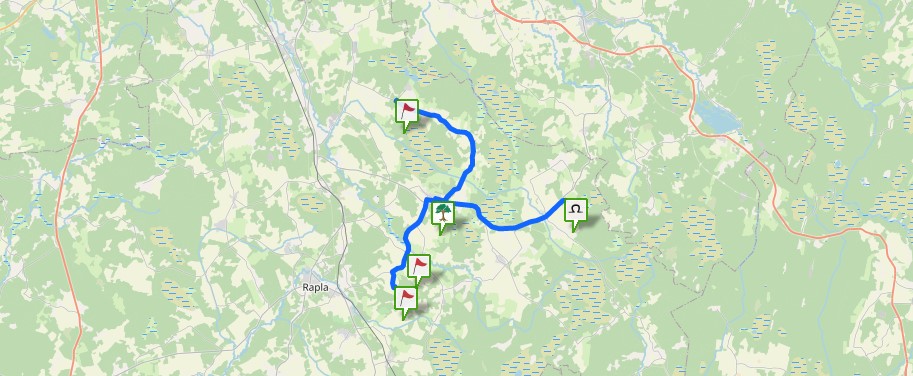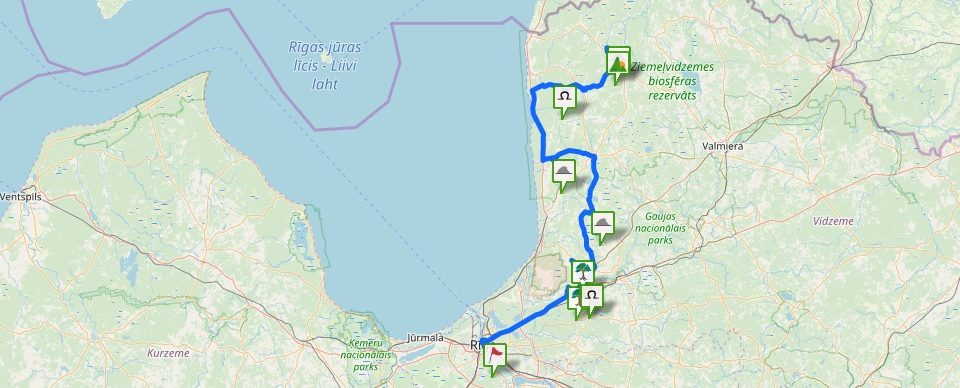Ogres Jāņkalniņš Hill is very picturesque as it is detached in the relief and well seen from wider surroundings. The hill is around 10 m high, in average 100 m big. There is a highway bending around the hill at its foot. On the N side of the Jāņkalniņš Hill Ogre Lutherean Church used to be which was destroyed during World War II. The hill has overgrown with trees and bushes are increasingly taking over more and more of the hill. Along the steep sides of the hill, which do not indicate unanimous signs of artifical steepness transformations some big birch-trees have grown and are still growing the lifetime of which is approaching its end. The top of the hill is rather large, slightly undulating, on its highest point there are the ruins of a brick church. Ogres Jāņkalniņš Hill has a significant dominating position in the scenery. It is possible that before the church the hill was connected with some other sacrality.
“The church the ruins of which can be seen on the hill was built in 1789. An interesting feature of the church is the iron clamps in which a smith has carved the slanting crosses (it is believed that the church did not like them). The first wooden church was built here as early as the Swedish times – in 1669 when Ērgļi-Ogre parish was formed (Erlaa-Ogershof). It is worth reflecting on what [p.28] has been here before the Swedish times. How could a hill like this appear in the middle of the field? Why is it named after Jānis? Archaeological excavations have not been made here, however, the hill is considered an ancient cult site.” G. Patmalnieks. Water Tourists’ Guidebook. Along the Ogre River. Staburag’s Children, 2004. p. 26, 27– 28.
The Ogre Jāņkalniņš Hill can be easily accessed along the highway. Next to it there are the ruins of the school which was destroyed during World War II and some holiday house. There are no signs regarding the Jāņkalniņš Hill.
